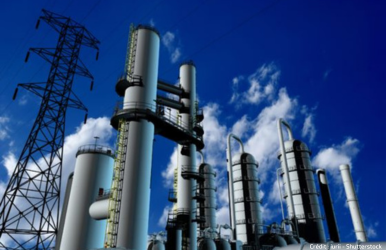
CEA-Leti x eLichens: a new generation of optical sensors to monitor industrial methane emissions
As part of the “Fuitographie” (Leakography) project funded by the Auvergne-Rhône-Alpes Region, Grenoble Alpes Métropole and Bpifrance under the PIA programme, CEA-Leti and eLichens are developing high-performance, miniature optical sensors for industrial methane leak detection. This project is part of the two organization’s long-term partnership.
Methane is a greenhouse gas whose impact on the environment is considerable. This is why numerous initiatives have been launched to reduce its emissions. One such initiative is the Global Methane Commitment, whose signatories have pledged to achieve a 30% reduction by 2030. At the level of the EU, this objective is reflected in a series of regulations that require manufacturers to rigorously control their gas discharges and leaks.
Miniature methane sensors with unprecedented precision
As a result, industrials are looking for innovative solutions that will enable them to effectively monitor their methane emissions at very low concentration levels. Drawing on innovations developed at CEA-Leti, eLichens already commercializes optical sensors and sensing systems based on NDIR (non-dispersive infrared) technology.
Nevertheless, the performance of current devices remains limited, especially in highly variable outdoor conditions. And yet, end-users are expressing the need for an even higher level of precision with a part per million Limit of Detection.
“Today, NDIR sensors on the market - with their small footprint, low energy consumption and low production costs - can achieve at best a methane Limit Of Detection of around a few dozen ppm," notes Vincent Destefanis, Partnerships Manager for optical sensors at CEA-Leti. “There are commercially available methane sensing solutions that can reach the ppm level, but these are large, costly systems that consume a lot of power, are difficult to handle and cannot be used for gas detection mapping."
To overcome these limitations, eLichens and CEA-Leti have built on their successful collaboration over the last ten years to implement the Fuitographie project. Selected as part of the project tender: “Projets Structurants Pour la Compétitivité (PSPC) - Régions", this project is supported by the Auvergne-Rhône-Alpes Region, Grenoble Alpes Métropole and Bpifrance (under the Plan d'Investissements d'Avenir in 2020).
New architecture for MEMS light sources
The aim of the Fuitographie project is first and foremost to develop a new generation of miniature, high-performance methane sensors with very low power consumption and low manufacturing costs. Another of the project's main objectives is to deploy several sensors in a network within a representative operating environment in order to map methane emissions for an industrial plant. Such an industrial deployment was made possible thanks to GRDF's participation in the project.
“One of the challenges was to develop a breakthrough innovation while maintaining a technological configuration similar to that currently used by eLichens," emphasizes Vincent Destefanis.
The mission of CEA-Leti is to support the technological transfer of this innovation in order for eLichens to industrialize and commercialize new products in a highly competitive market.
To achieve this goal, CEA-Leti leveraged its cutting-edge expertise in miniature optical sensors for microelectronics and microelectromechanical (MEMS) manufacturing processes.
“The measurement principle behind these optical sensors is to gauge the decrease in light intensity after it passes through a gas," explains Vincent Destefanis. “Here, the primary innovation lies in the development of a new light source architecture, which has been integrated within a MEMS miniature sensor. This innovation emits more light, while respecting size, consumption and cost constraints."
From a new light source design to the evaluation of its performance, CEA-Leti was entirely responsible for the development of this innovation. This phase, which was carried out in a laboratory setting, demonstrated the ability of this new sensing solution to achieve a ppm Limit of Detection for methane. Industrial deployment of this innovation was also tested at a GRDF gas plant, leading to the publication of a white paper by eLichens.
